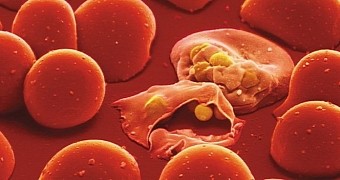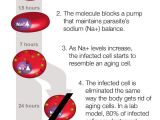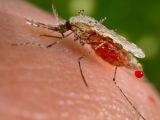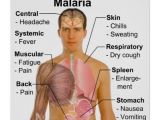In a recent paper in the journal Proceedings of the National Academy of Sciences, researchers explain that, having carried out a series of experiments on mice, they found that a compound dubbed (+)-SJ733 can make mincemeat of the malaria parasite in just 48 hours.
Admittedly, the compound in question is yet to be tested on human subjects. Still, scientists have high hopes that (+)-SJ733 could help eradicate this deadly disease that, in the year 2012 alone, claimed around 473,000 to 789,000 victims.
How the compound behaves inside the body
As detailed in the journal Proceedings of the National Academy of Sciences, the compound works by enabling the body's natural defense mechanisms, i.e. the immune system, to take action and sacrifice red blood cells that carry the malaria parasite inside them.
Scientists with the St. Jude Children’s Research Hospital in the US explain that the compound achieves this by triggering changes in the makeup of infected red blood cells. More precisely, (+)-SJ733 toys with the activity of a protein dubbed ATP4, and in doing so, it essentially marks the cells for destruction.
It is understood that, after being exposed to this compound, malaria-infected cells change their shape and become smaller and more rigid. This causes the body's immune system to view them as aging red blood cells and to destroy them just as it would any other old cells that are no longer needed.
The outcome of the mice experiments
Having administered the compound to several laboratory mice, the scientists behind this research project found that, following inoculation, it only took 24 hours for the rodents to be clear of 80% of the malaria parasites planted in their bodies at the beginning of the study.
Another 24 hours later, the rodents no longer showed any signs of carrying malaria parasites in their bodies. It's important to note that, while helping the immune system remove malaria-infected red blood cells, (+)-SJ733 did not in any way affect healthy cells.
Using the compound to treat malaria in people
Given the encouraging outcome of this series of experiments carried out on laboratory mice, the St. Jude Children’s Research Hospital scientists are now looking into the possibility of rolling out clinical trials involving human subjects. The idea is to test the compound on healthy adults.
The researchers hope that, sometime in the not-too-distant future, they will be able to introduce the world to drugs that employ (+)-SJ733 to rid the human body of the malaria parasite. This would help save the life of hundreds of thousands of people, children included.
“These results indicate that SJ733 and other compounds that act in a similar fashion are highly attractive additions to the global malaria eradication campaign, which would mean so much for the world's children, who are central to the mission of St. Jude.”
“Our goal is to develop an affordable, fast-acting combination therapy that cures malaria with a single dose,” specialist R. Kiplin Guy, Ph.D., chair of the St. Jude Department of Chemical Biology and Therapeutics, said in a statement.

 14 DAY TRIAL //
14 DAY TRIAL // 



